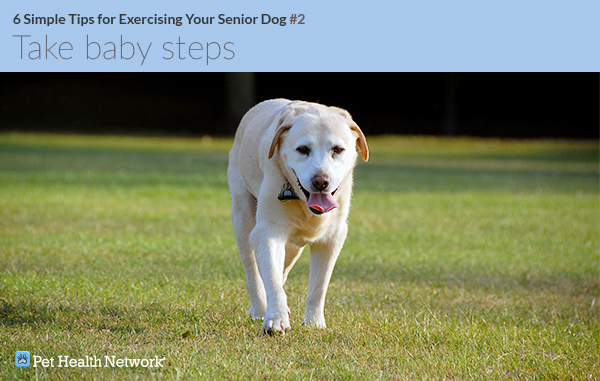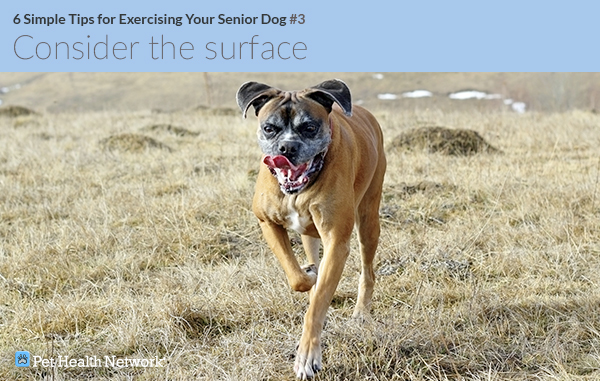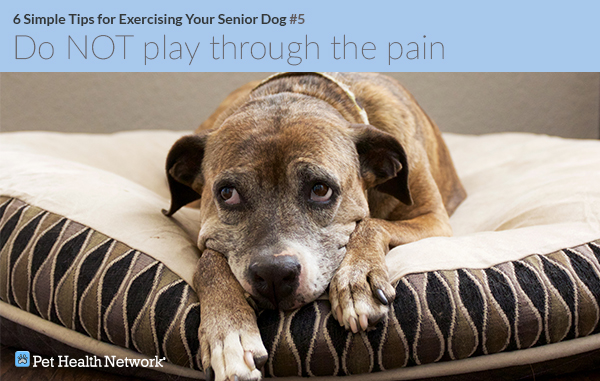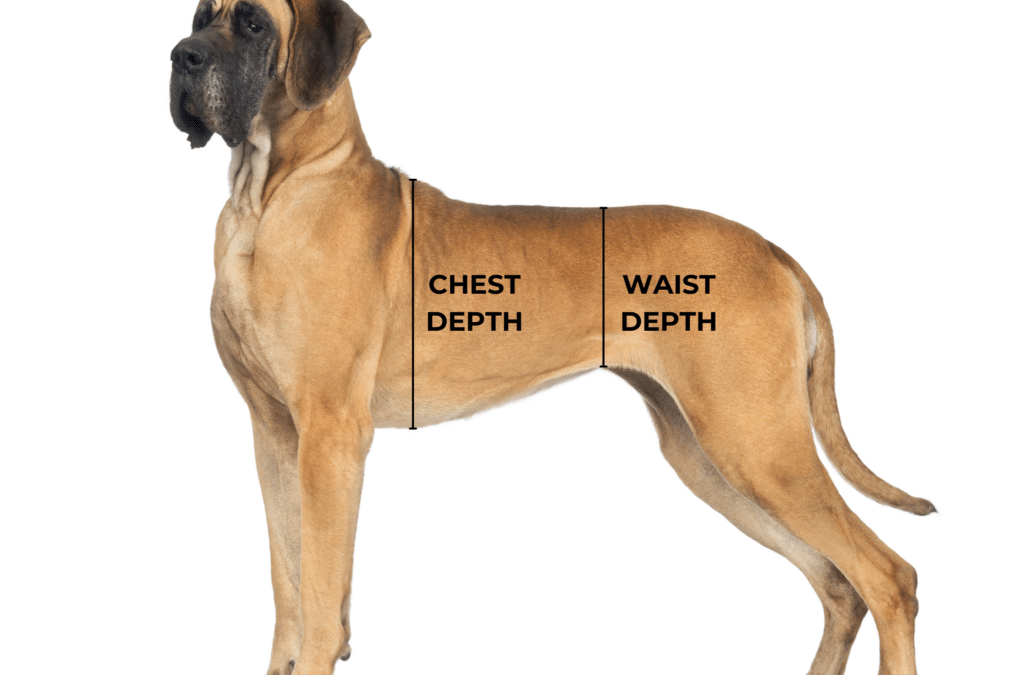
6 Simple Tips for Exercising Your Senior Dog
Dr. Mike Paul, DVMDog Checkups & Preventive Care
Once upon a time, you probably had a puppy that was as self-motivated as any human three year old— happily running in circles for no particular reason at all. And maybe at some point, as your dog aged, you were secretly (or maybe not so secretly) happy to see a bit of a decrease in his energy level. But now he’s an older dog, and you realize that he has really slowed down. To a point, that is perfectly natural.
Just like us, as our dogs enter into their senior years, they become more sedentary. Maybe they hear less and see less and just aren’t as stimulated to get up and move anymore. And maybe you think, “Well, my dog seems perfectly happy to just lie around and sleep. Why should I force him to exercise?”
The answer, of course, is that it is good for him. Just like it is good for you. Inactivity makes dogs more prone to obesity which puts them at increased risk of other serious, medical conditions such as:
- Diabetes
- Osteoarthritis
- Heart disease
Unfortunately, your dog lives in the moment – that one where he is content to snooze in the sun. He’s not capable of seeing the bigger picture, but you are. That means it is your responsibility to get him up and moving.
I am not going to tell you what to do with your dog for exercise. I trust that you already know that dogs like to walk and to run and to play games like fetch and tug-of-war. And if you’ve known your dog since he was a puppy, you already know where his personal interests lie. Instead, I will give you tips about how to exercise your senior dog.
1. Get the green light
First, see your veterinarian. Your senior dog needs a complete physical examination in order to make sure that he is healthy enough for increased activity. Serious metabolic disorders like heart disease, diabetes and common aging problems like osteoarthritis need to be ruled out or addressed as possible reasons for your dog’s inactivity before a change of lifestyle occurs.
You may also need to change your dog’s diet to accommodate increased caloric requirements or special medical needs.
And, there is a very real possibility that your dog may experience some aches and/or pains associated with his new routine. Since most human pain medications are NOT appropriate for dogs, you will want to talk with your veterinarian about what you can safely administer to your dog if he needs pain management.

2. Take baby steps
I know your dog is a senior, not a puppy, but take baby steps. Depending on just how out of shape your dog is, you need to begin slowly. You wouldn’t start a new exercise routine by entering a marathon or bench pressing your own body weight. So don’t expect your dog to come right out of the gate running three miles with you that first morning. This is about you working together with your dog; it’s not about him keeping up with you. Be especially aware of your dog’s attitude, his breathing and even his heart rate. If he looks at all over-exerted, stop. Do not force him to go on.

3. Consider the surface
Always remember that your dog is not wearing the latest, ergonomically-engineered footwear. He’s just walking on his poor, little, old, tired feet and he presumably hasn’t been doing much on them recently— by way of stimulating tough calluses. Stay away from:
- Blistering hot pavement
- Freezing snow and ice
- Ridiculously rocky terrain
That is not to say that your dog should always only walk on perfectly smooth and level surfaces. First, those might be too slippery for him. But more importantly, there is benefit to walking up and down reasonable slopes and on somewhat uneven surfaces with some traction. He has four legs. That means if one of them is stiff or uncomfortable, he can shift his weight off of that leg. That makes him more comfortable in the short term, but can result in muscle weakness in the long term. Making your dog maneuver a bit on those less-than-perfect surfaces can make him use all four of his legs.

4. Mix it up
Just as you should change up the walking/running surfaces, you should change the routine itself. You want to keep your dog mentally interested and stimulated too. Don’t always take the exact same route. Don’t always play the exact same games:
- Get your dog a new kind of toy from time to time
- Take a swim
- Teach your old dog a new trick
- Visit a dog park
- Make new friends

5. Do NOT play through the pain
As mentioned above, you should have already talked with your veterinarian about appropriate pain medications. Now you should use them, if they are indicated. My clients often remark, “Oh, I don’t think he’s in pain. Sure, he walks stiffly or is occasionally a little lame, but he doesn’t cry.” The reality is that dogs don’t typically whine and cry when they have chronic discomfort; they just carry on. So it is up to you to appreciate the signs. Have your veterinarian watch your dog walk, stand up, lie down, etc. Evaluate his gait and talk about what indicators you should use to determine if and when your dog needs pain medications in order to maintain a healthy and beneficial exercise routine.

6. Reassess
Finally, constantly tailor and re-adjust any exercise program to your dog’s individual situation and changing abilities – whether that means your dog gets stronger and can do more or becomes frailer and needs to do less. Remember, at the end of day the point is to enjoy each other and have fun while working toward a happier, healthier, senior dog.

If you have any questions or concerns, you should always visit or call your veterinarian — they are your best resource to ensure the health and well-being of your pets.
Related symptoms: Pain



